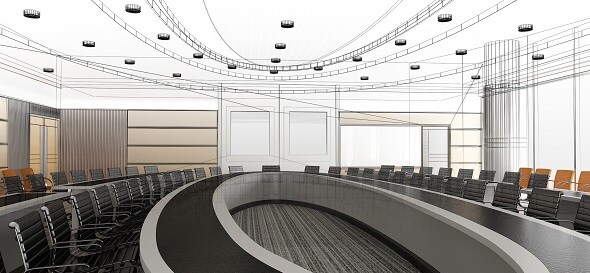
Manufacturers face a significant challenge in this new era, specifically around the digitization of their products and understanding what information should be provided about their products.
However, taking the first step toward modelling products for BIM can be daunting. Here are a few tips to help manufacturers through that process.
1. Why do I need to engage with BIM?
If design teams understand the data associated with a manufacturer’s products, they are more likely to select these products and use them within buildings.
For procurement teams, if the data is easy to find, at the point of selecting actual products, they are more likely to choose a manufacturer’s objects as they’re “ready to go”, with the right level of technical information available that matches the specification.
For manufacturers, return on investment is about making sure you are one of the early adopters before your competitors steal that march.
2. Do I need to provide 3D objects?
It’s a common misconception that if you’re a manufacturer, you must provide 3D objects for BIM. In fact, that might not be the case. For component items such as pipes and air conditioning systems, there is value in providing BIM objects, to allow coordination. However, other products such as walls and floor finishes often just need the data related to them, particularly where they have ongoing maintenance requirements.
It’s important that manufacturers understand their customer’s requirements before providing accurate, well-designed BIM objects. Unless there is a requirement for high levels of coordination, customers may only need your data, rather than 3D objects themselves.
3. Is it too soon to engage with BIM?
Manufacturers must be prepared for this new era of construction. BIM is here to stay and with the manufacturing industry being so competitive, it’s really important that manufacturers can differentiate their construction products when tendering for BIM projects and to gain access to new markets.
Providing high-quality product data is vital – particularly dimensional and performance data. Sub-standard BIM models have a massive impact on site, adding time and expense and frustrating clients. It’s crucial that organizations embrace BIM and have a clear process for validating the quality of their BIM.
4. Do I need to provide high resolution 3D objects?
Actually, when it comes to BIM objects – you don’t always need to provide high resolution objects. Providing too much data or inserting hundreds of high resolution products into a BIM model can slow things down, costing time and money.
See BS 8541-3 - Library objects for architecture, engineering and construction. Shape and measurement - code of practice can provide guidance on this as it defines three levels of detail: Schematic; Coordinated and Visualization.
At the very least, products should be modelled to a coordinated level; however this depends on the type of product and the manufacturer’s customers’ requirements.
5. Do I need to standardise data?
With so much data being produced across a variety of formats by multiple teams, it’s important to standardise how data is managed and created. Using the same language and format for data is also important as it allows construction professionals to consistently assess and compare products. The first step towards this is aligning with the requirements of BS 8541 Library objects for architecture, engineering and construction.
Another relevant standard is BS 1192 Collaborative production of architectural, engineering and construction information – Code of practice defines a common data environment. Whilst written with design and construction professions in mind, the principles can also be applied to manufacturers through the product design and development process.
It can help to streamline and improve quality by ensuring all data is held centrally as a “single source of truth” with a process for checking, authorizing and archiving data.
A central database with a standardised structure and naming conventions (i.e. a Product Information Management System) can also help to manage this as you can link this to other internal systems or create APIs to external platforms.
The overall aim of BIM is to help companies to carry out more efficient methods of design and construction, ultimately driving out waste and inefficiency. The UK government alone estimates that it has already saved £840m through the use of BIM, with average project savings of 20%.
Accurate objects and product data can help manufacturers to support construction companies, delivering savings on site. This can also help with ongoing maintenance by having accurate data to hand in the model.
By verifying a BIM object beforehand, the accuracy of the design and installation can be improved, significantly reducing the cost and time associated with returning and replacing products that don’t fit the original specification, as well as time spent sourcing and validating data.
The BSI Kitemark™ for BIM Objects can help manufacturers demonstrate that they have embedded BIM into their manufacturing processes and are delivering high quality BIM objects.


